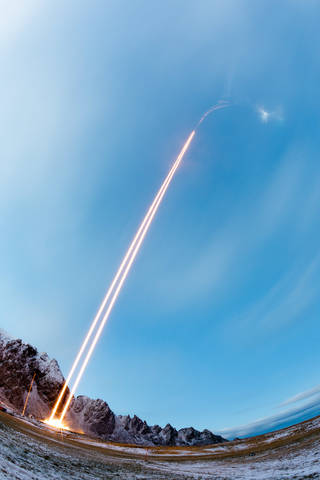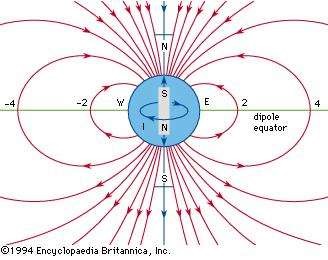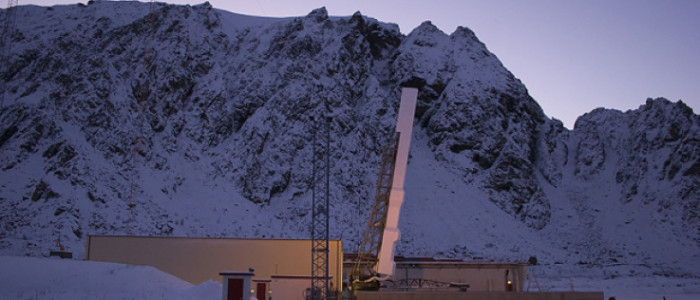
The two TRICE sounding rockets launched with few minutes interval. Photo Credit: NASA/Jamie Atkins.
Two sounding rockets from NASA blasted off from the rocket range at Andøya early in December 2018, marking the beginning of one of the largest campaigns ever from the rocket range in the northern Norway. The campaign named “Grand Challenge Initiative” is designed to explore the area called the Geomagnetic Cusp, or Polar Cusp, from the area where it is most intense, meaning the area between 70-80 degree north, from the northernmost part of the Norwegian mainland to the northernmost part of Svalbard archipelago.
The initial plan was to start the campaign last winter with the NASA rocket AZURE, but unfavourable weather and atmospheric conditions forced the scientists to postpone the mission to this winter.
The first rockets were two Black Brant XII that lofted the TRICE-2 mission. TRICE stands for Twin Rockets to Investigate Cusp Electrodynamics. As the name indicates, the mission consists of two rockets launched with two minutes’ interval, 8 December 2018.
The campaign will launch eleven rockets divided in eight different missions. The rest of the missions will be launched right before the end of 2020. The rockets will be launched from Andøya Rocket Range, or from the Svalbard launch site at Ny Ålesund.
Why These New Investigations of the Geomagnetic Cusp?
There are different reasons:
- As of today, the scientists do not have enough information to get the full picture when it comes to this phenomenon.
- The phenomenon disturbs communication and radar signals. How counterbalance that?
- A desire to be able to establish a space weather forecasting, like the meteorological forecasting.
The mainly of the missions will study the flow of particles in the ionosphere, the electrically charged layer of the atmosphere that acts as Earth’s interface to space, focusing specifically on the E and F regions.
The E region — so-named by early radio pioneers that discovered the region was electrically charged, and so could reflect radio waves — lies between 90 to 150 km above Earth’s surface. The F region resides just above it, between 150 to 500 km altitude.
Preliminary launching programme.
The missions in the campaign are today as follows, but additional sounding rocket missions from these agencies as well as other national agencies are under consideration to complement the current project and expand further the scale of international collaboration. The progress in the program also depends on the right atmospheric and weather conditions in the test area. The list below shown: missions name, launching place, missions responsible and missions goal.
TRICE-2 Andøya, Norway, Dec 2018. NASA mission. Twin Rockets to Investigate Cusp Electrodynamics-2 (already launched)
AZURE Andøya Norway, NASA mission – Study the flow of particles in the ionosphere
VISIONS-2(2x BB X) – Ny-Ålesund, Svalbard, NASA mission – VISualizing Ion Outflow via Neutral atom Sensing–2
G-CHASER Andøya, Norway, NASA mission – Grand Challenge Student Rocket (International collaboration). Coordinator: Kolbjørn Blix, Andøya Space Center
CAPER-2 Andøya, Norway – Cusp Alfven and Plasma Electrodynamics Rocket-2
JAXA SS-520 Ny-Ålesund, Svalbard, JAXA mission. – Ion outflow in the cusp
ICI-5 Ny-Ålesund, Svalbard, – 3D in-situ observations of ionospheric irregularities in the cusp. PI: Jøran Moen, Norway / UiO
C-REX-2 Andøya, Norway – Cusp-Region Experiment 2. PI: Mark Conde, USA / University of Alaska, Fairbanks (UAF)
Earth’s Cusp
 Where the magnetic field lines around the world splits with the two polar areas are called polar cusps. The projection of the polar cusps on the atmosphere at about 72° magnetic latitude creates the dayside auroral ovals. Auroras can be seen in these regions in the dark hours of winter, but they are much weaker than on the nightside
Where the magnetic field lines around the world splits with the two polar areas are called polar cusps. The projection of the polar cusps on the atmosphere at about 72° magnetic latitude creates the dayside auroral ovals. Auroras can be seen in these regions in the dark hours of winter, but they are much weaker than on the nightside
Earth’s cusps are magnetic field features in the magnetosphere associated with regions through which plasma from the Sun can have direct access to the upper atmosphere, or where the magnetic field lines around the world splits with the two polar areas. Recently, new ground‐based observations, combined with in situ satellite measurements, have led the way in reinterpreting cusp signatures. These observations, combined with theoretical advances, have stimulated new interest in the solar wind‐magnetosphere‐ionosphere coupling chain. This coupling process is important because it causes both momentum and energy from the solar wind to enter into the near‐Earth region.
Featured Image:
Sounding Rocket from Andøya Rocket Range
Photo Credit: Andøya Space Center


